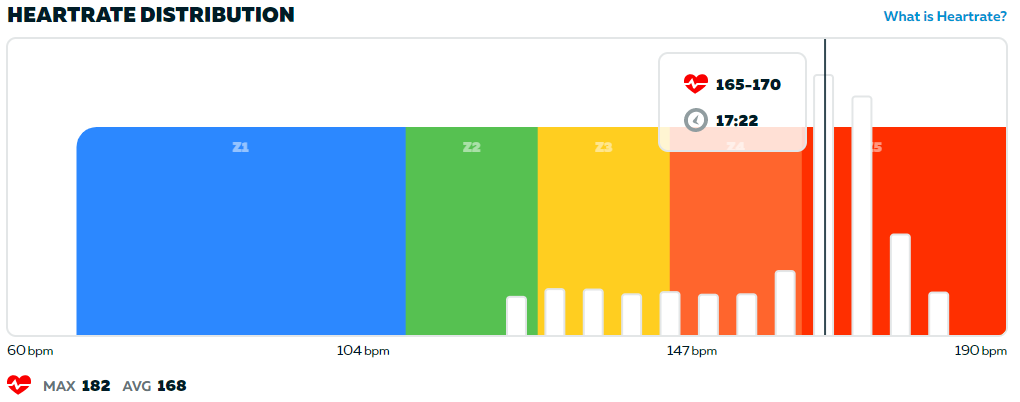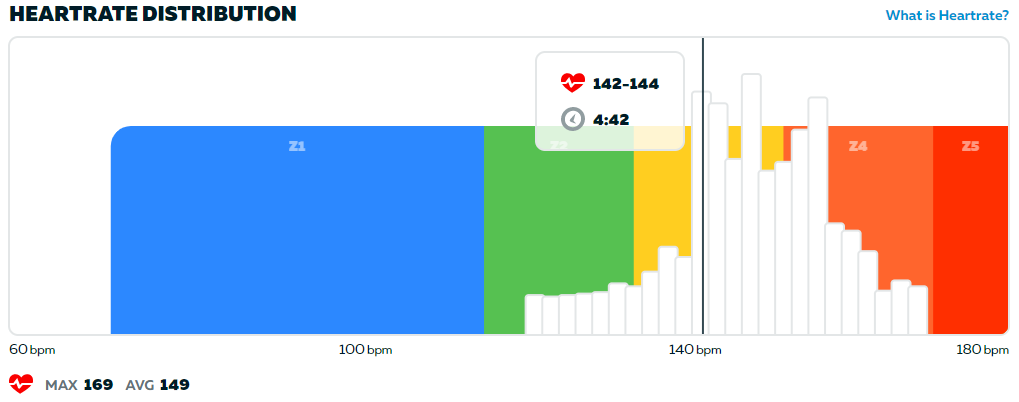The other day I posted a reply to a thread on the Zwift forum. If you didn’t get the point of the previous blog post, the one about Ethics in Zwift, then maybe my reply can serve as a clarification. So I thought I would repost it here.
As usual, I don’t want to expose names. (Dig yourself if you must.) Names are not interesting, at all. Nothing of the problems with Zwift racing that I write about has anything to do with individual subscribers anyway. Rather, I cover a system that is falling apart because it was flawed to begin with. And it is this system that creates cheating by promoting it. And if this system creates a whole bunch of cheaters, it also creates ten times as many weird and unfair situations in races on a daily basis even though it can’t be classified as cheating.
Anyway, a guy in cat B despairs after a race and decides to seek advice from the forum. And I would guess this isn’t the first time he despairs. Nor the last. It was probably just the average race and thus a representative one. Our rider is on top of cat B in terms of his sustainable W/kg, but he is light and weighs in at only 67 kg.
Now, the problem was that even though our rider put out an impressive average effort of 4.1 W/kg over the race, barely admissible by ZP standards, he still came in outside the top 10. On ZP. And so he asks the forum, what’s wrong with his race tactics?
Many of us can sympathize with that because we have been in exactly the same situation. You fight your way up to what you think should be the top of your category only to find that you’re not there still. And after a while you begin to suspect that you never will be, and that you will sooner get moved to the next category than get a podium placing (the light rider’s curse). And you know what? You’re right. You’re are screwed. You were screwed even before you started racing in Zwift, and you only realized it now.
With that backdrop, here was my reply:
I’m not racing in B but then again B, C and D are all the same, while A is an entirely different beast. I think responder X leaves an important clue above here.
Like he says, most of those above you in the results list have at least a sliver of green in their NP bar, meaning they have higher variability in their power output than you. Like you say, meaning they can. Whereas you – I’m guessing here – are more in an all-out effort and not able to match them in e.g. small climbs since, like you say, you have little to spare. They on the other hand…
Plus you are already at a disadvantage being on the lighter side among the top X, since you need to push higher W/kg to stick with the heavies on flattish roads. And being light alone doesn’t benefit you as much as one might think even in a climb.
The next thing you should look at now is the other riders’ race profiles on the Zwift website, quickly accessed through the little green bar diagram symbols on the far left on the ZP race report. (ZP is down right now or I’d look myself.)
Take a look at their HR distribution diagrams. Are they different from yours? Do they have more time spent in Zone 3 or lower Zone 4 than you? If so, then there is your explanation to the disappointing result. If they are not working as hard as you, no wonder they have juice to spare at critical moments. And so you get dropped.
I point out two important things above:
1. At some point you as a lighter rider will have to go over W/kg cat limits to stay with a heavier guy who is onthe limit. (Sums up the entire race, doesn’t it?) So as a lighter rider you are basically already screwed. You can’t really both win and stay in cat (unless you race in A). The race favors a heavier rider, given equal W/kg capabilities. Any race does, except the rare race including a very long climb. Granted, at some point weight turns into overweight and body fat doesn’t help you race. But there is a sweetspot in cat B-D. And whatever it is (it’s dependent on other race participants’ weights), it’s higher than your 67 kg for sure since your weight is below the race average. Is this cycling physics? No, it’s Zwift race rules and just that. See below.
2. Given that you both respect W/kg cat limits but barely so, you will always be at a disadvantage against someone who is making less effort than you. Yes, that’s correct! Zwift actually favors cruising a race.
Sandbagging is not the most common form of cheating in Zwift. Cruising is. It’s just not as visible, unless you start digging in data on Zwift and ZP. How to win a race in cat B-D in Zwift and ZP is you get fitter so as to outgrow your cat but still stick around. You never pull, always draft. You always monitor your avg. W/kg as to not go over limits although you could. You leave a little room to spare in that average. And then in climbs or similar you bring down the hammer briefly. If you don’t do this, then someone else will. In basically any and every race. You need to get really lucky to sign up to a race with no cruisers in it.
Cruising as a form of cheating is real. Then on top of that there is a huge grey area where people aren’t exactly (or consciously) cheating but their levels of effort still differ significantly in a race. And who is to say how much you are supposed to suffer in a race? Shouldn’t you be allowed to race any way you like, it’s your body after all? And the answer is yes of course. But then also, should someone who doesn’t want to go too hard have the upper hand in a race? I don’t know. Occasionally maybe? But in every race?! Because that is what we have, a race system that will always favor riders who don’t want to go too hard. Zwift Velominati rule #1: STFU – Soften The F… Up, kinda.
It all boils down to the W/kg system in Zwift, as promoted by ZP, being utterly inappropriate as a race categorization. And there is nothing like it in any RL sport. It is unique and uniquely inappropriate. We can never get away from Watts and kg because both are needed for accurate and fair simulations on a smart trainer in cat A. But they won’t do as a way to split up riders into categories to make racing interesting for all.
What is needed is instead a race categorization based on past results, just like in US cycling, World Cup skiing etc etc, a proven concept. It works. And it would work for Zwift too and make racing more intuitive and interesting.
You enter a race and don’t feel like going too hard, you just wanted to participate for fun and fitness. Ok fine, but you don’t win. Agreed? Fair deal?
You enter another race and don’t feel like going too hard (except at crucial moments like small climbs) and it turns out you still outperform the other riders because they are weaker even though they go flat out. Ok fine, you win this time. Kudos to you for being so strong!
You enter yet another race and don’t feel like going too hard, and it turns out you still outperform the other riders. Not fine. Because now you have already been on the podium in many races in your category and it’s time you get moved up to the next category where you obviously and rightfully belong. And a results-based categorization does exactly that. It’s self-sanitizing.
You can’t put upper limits on people’s efforts in a single competition or race. (You have to do that between races.) “Go hard! But not too hard!” That goes against reason and the nature of sports. Time for a change.
At the time ZP was down. Since then I have had the opportunity to have a look at the HR distribution graphs of the riders in that race. Our rider looks like this:

Our rider’s graph looks a little odd in that so much time is spent in Zone 5. It turns out he has a max HR that goes at least 10 bpm higher than the average for his age. And so without adjusting HR zones, what looks like a Zone 5 effort is rather an upper Zone 4. But even so, as I suspected he is on the threshold most of the race. For a few seconds here and there he gets to coast a bit, but you know what it’s like doing 30/15’s. Those 15 seconds are not enough to bring your HR down. And thus we see less variability at the upper end. He can push it a little when he is forced to but not by much. There is little to spare.
Some of the guys higher up in the placings are working hard too but there are also some guys like this:

He finishes the race a few seconds ahead of our rider. With his higher variability of power output he probably sprinted the crap out of our rider and a few others. But how do you beat a guy like this one? You can’t! He will still have a whole pocket full of matches as you strike your last one.
These two riders are competing in the same category with the same artificial upper effort limit. They are not allowed to go any harder than 4.0 (+0.1) W/kg according to ZP. Who would you rather be hitting 4.0 if the task is to win the race? (That’s usually what races are about.)
This is not to say that a rider like ours above wouldn’t look the same if he was somewhere in the middle of a category in a proper and sound results-based race categorizaation. He would. And he still wouldn’t win. The difference, though, is that the fights for the podium in any such category would be hard, fair and equal for anyone except for those just passing through the category. Let them pass through. And let the real racing begin.
I say it again:
You cannot put an upper limit to rider effort in a race.
It’s a nobrainer, it really is. Stop hugging an idiotic system just because it feels familiar to you. Once upon a time you were a neophyte zwifter and everything was new and unfamiliar. It’s time to go out in deep waters again. Knee-deep. I know, it’s scary. But you will be fine, I promise.
